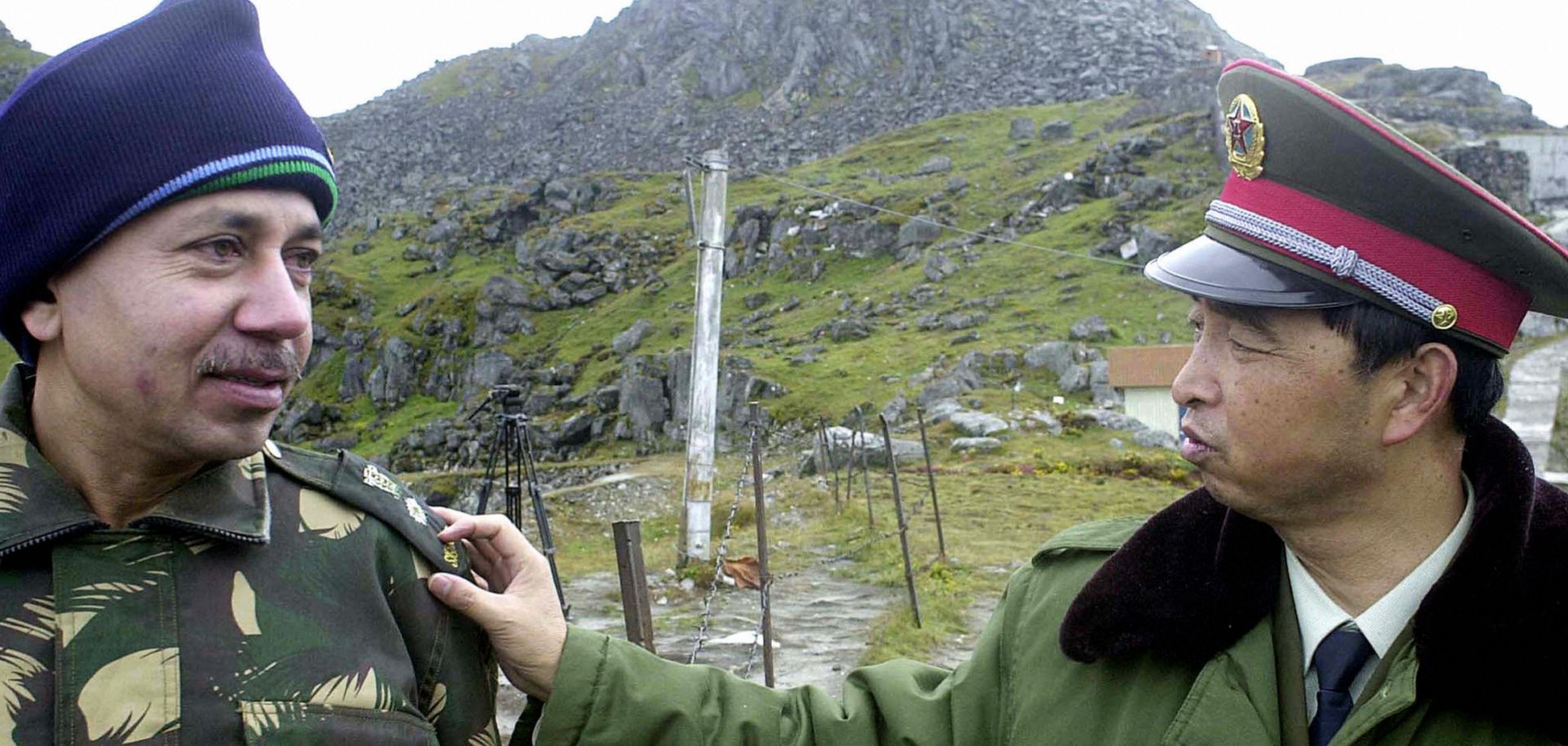COLUMNS
After a Collision in Doklam, India and China Are Correcting Course
Sep 6, 2018 | 09:00 GMT

A Chinese soldier interacts with an Indian soldier at the Nathu La Pass area at the India-China border in the northeastern Indian state of Sikkim. A year after their tense military standoff over the Doklam Plateau high in the Himalayas, India and China are in the middle of resetting their relationship.
(PSTR/AFP/Getty Images)
Highlights
- Tensions between India and China have relaxed considerably since their armies faced off on the Doklam Plateau in the summer of 2017.
- This change is a result of setbacks to Indian foreign policy and a more difficult global strategic environment for China.
- Despite a return to limited cooperation, India will continue to see China as its biggest geopolitical rival, though it will compartmentalize its adversarial relationship.
- India will continue to build up its military and establish new bilateral security ties to counter China, but it will also refrain from joining any anti-China military bloc, will soften its strident opposition to the Belt and Road Initiative and increase participation in Chinese-dominated multilateral initiatives.
Subscribe Now
SubscribeAlready have an account?
